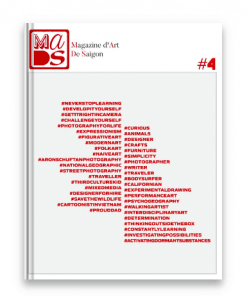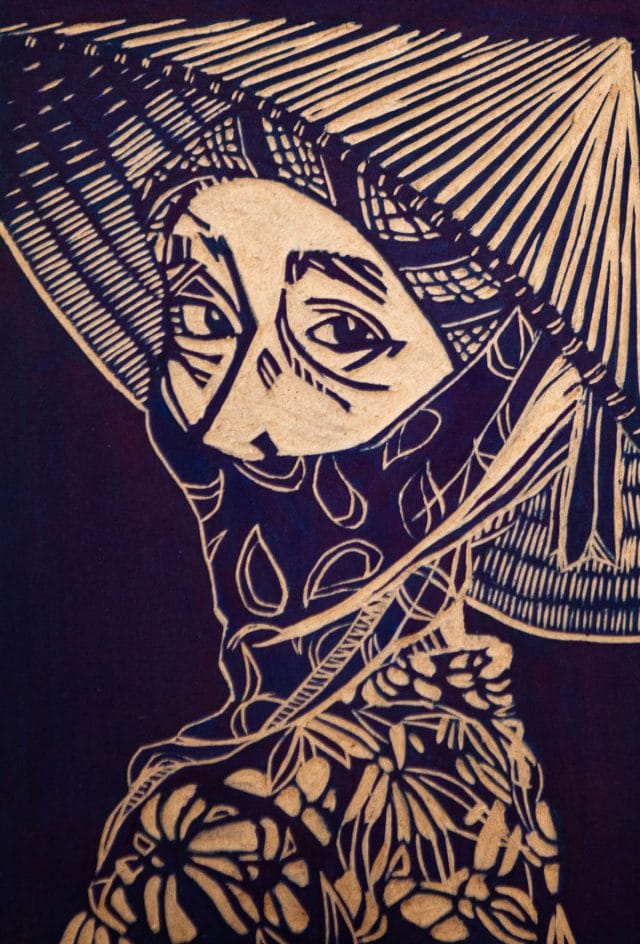Woodcarving to you is…
Woodcarving sits between craft and art and can be unique like sculpture, or a series like photography.
When I carve…
Woodcarving demands time, contemplation and concentration. so when I carve, I am realizing that it is working on my character while I am working on the piece.
My favourite tool is…
I have one blade that I use most often – you can recognize it in the carvings. but the more carvings I do, the more blades (with different widths) I am using, in order to better represent the character of the landscape or portrait.
Now, whenever I am in a café or stopped in traffic, I notice much more the shapes and patterns in people’s faces, and I am always thinking how I would translate this face or this moment to a piece of wood without losing the essence of the personality or the setting.
Patrick Carpenter, born and raised in Southern California, but have lived almost exclusively out of America since graduating from university. I have lived in Vietnam for well over a decade, first in Hanoi and now in HCMC.
I came to woodcarving (and printmaking) through photography.
I have been photographing Vietnam and Southeast Asia from the first day I arrived here, both for personal projects as well as for professional assignments. I find this part of the world extremely photogenic, and I have not lost my enthusiasm for trying to meaningfully document daily life in Vietnam and the region. Along the way, I have accumulated a pretty hefty photo archive, and I wanted to find a way to repurpose some of these photos that have been out of sight, hibernating.
I took Jack Clayton’s woodcarving-print making class here in HCMC and decided that some of my old photographs could work as carvings. I looked for faces and landscapes with features that could be translated into carvings – meaning I looked for features that could be simplified down or translated from full colour and nuance to one colour and flat perspective. I tried reducing every subject to the minimum of lines, and then tried to find the pattern in those lines, and then tried to work out a balance between character and pattern.
Part of my enthusiasm for carving was that woodblocks and prints have a place of respect in the art of Vietnam. I wanted to attempt to learn this type of art because I felt, for whatever reason, it might add a layer of understanding or appreciation for the skill and the contribution to Vietnamese culture. I can remember watching the woodcarvers in Hanoi’s Old District and how the blade would fly around the wood with full confidence. It seemed a skill and an art form that should be more widely admired, and should not have to fight for relevance and appreciation in today’s art markets.
Along the way, it has been useful to explore beyond the block prints (and even the wood sculptures in the museum of ethnography) you can find here in Vietnam. I have enjoyed going over the carvings of the German Expressionists, old book and magazine illustrations, early 20th century posters, Matisse’s cut-outs and portraits, some sculpture (especially Calder and Moore), African and Latin American folk art, and the unreachable mastery of the Japanese woodblocks. Even looking at architecture and reading what architects like Louis Kahn have to say about shadow and light has helped.
The discipline of woodcarving (you cannot erase, so you must fully commit to each line you carve) is essentially the opposite of what I enjoy about street photography. It is an oversimplification, but woodcarving is drawing extremely slowly and imprecisely; photography is drawing extremely accurate and extremely fast.
On the street with your camera, you take what is given to you: the setting, the light, the tension. The randomness is the medium and the challenge. Woodcarving is closer to studio photography, where you try to control every element in the photo. I do more architecture photography than studio photography, but it’s the same discipline for the eye, and I find the carvings help train my eye to recognize patterns in structures, shadows, and light. Now, whenever I am in a café or stopped in traffic, I notice much more the shapes and patterns in people’s faces, and I am always thinking how I would translate this face or this moment to a piece of wood without losing the essence of the personality or the setting.
And the more carvings I do, the more I am willing to depart from my initial sketches and just look at how each new carved line relates to all the others, and from this, build the portrait cut by cut or line by line. So the openness to serendipity, which is a key element in photography, seems to be creeping into my woodcarvings and prints. So I like to think that these two disciplines are serving and benefiting each other and the work.
I would hope that I could accumulate enough carvings to feel I have a representative depiction of what I have seen and experienced and who I have been fortunate to meet during my time in Vietnam. I would hope the effort would be appreciated by the woodcarvers here in Vietnam as a valid attempt to communicate in their particular discipline and their particular dialect.










